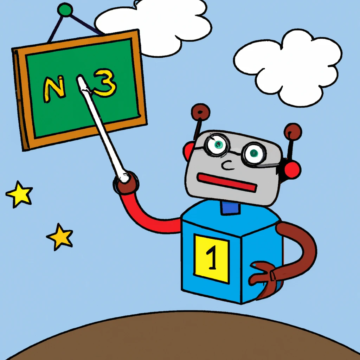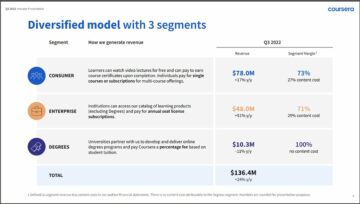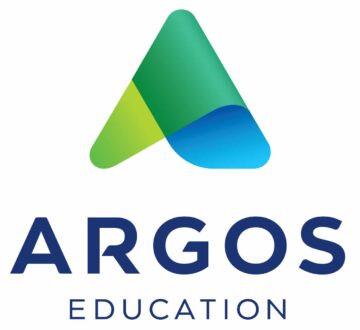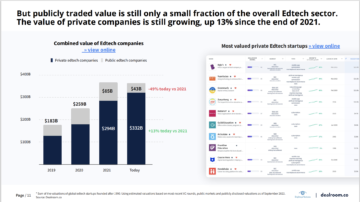
I’ve always written about whatever interested me at the time. It could have been driven by the work I was doing, a hot product category, or something that bothered me. That won’t change. But what interests me now is that significant changes finally seem afoot for education.
I’ve always been fascinated by the evolutionary biology concept of punctuated equilibrium. An ecosystem can seem remarkably stable and resilient for a very long time. But when just the right pressures come along, it can shift suddenly and dramatically until it finds a new equilibrium. For example, when Europeans came on ships to Australia, New Zealand, and the surrounding islands, the ships brought rats with them. Those rats killed off entire species of flightless and ground-nesting birds. Those birds interacted with other species. For example, they may have helped spread seeds of trees and bushes, as birds often do. So an environmental system that was stable for thousands of years suddenly underwent a rapid and cascading series of changes until it reached a new point of stability that could accommodate the invasive species.
Systems thinking provides a complementary way of approaching the same phenomenon. Using this lens, we see the world in terms of negative and positive feedback loops. A negative feedback loop compensates to stabilize change. For example, if the temperature drops in the house too much, then the thermostat turns on the heat. Once the temperature is back to the setting on the thermostat, the heat turns off. Positive feedback loops are the opposite. They reinforce. For example, when you cut yourself, the injured tissue at the cut issues a chemical call to attract platelets. The platelets arrive and issue chemical calls for more platelets. As this process builds, your blood clots. These positive feedback loops can sometimes run amok. For example, when the rats ate the easy prey of the ground-nesting birds in the previous example, more rats survived to produce more litters of rats, which ate more birds. This sped up the change that was underway.
I think we’ve reached a tipping point in US higher education and elsewhere. We’re entering a period of rapid and unpredictable change. As a result, some topics that didn’t interest me before because I didn’t think they would lead to change are now more interesting to me. Topics outside my “beat” as an analyst are now interesting because old boundaries are becoming weaker and more porous. In the remainder of this post, I will offer a preliminary list of topics I’ll be paying more attention to. I have no grand theory of change at this point. I’m not a Futurist. But I am looking to write more about some forces that drive change and early indicators of where change might be happening.
Enrollment shift
For decades, predictions that an enrollment cliff was coming in US higher education failed to pan out. This time feels different. Yes, the demographic shift is looming, although it’s not fully here yet. Other factors seem more urgent. Traditional students and their parents have been increasingly priced out of college or just questioning the price-to-value of it. The shift to remote learning over the pandemic followed by the red-hot job market have driven more students to defer college in favor of a job. Traditionally, that has meant they are a lot less likely to come back. As the economy moves toward a likely recession, we don’t know whether the usual counter-cyclical effect of more students enrolling in college will hold this time. If it doesn’t, there will be trouble for the institutions on the bottom half of the financial health spectrum.
Other changes are in play too. First, the growth slow-down of OPMs is one indicator that traditional means of growing enrollment may be increasing played out for colleges and universities. Meanwhile, the growing numbers of people in the workforce without college degrees means more people who will eventually want to go back to school for the skills they need to advance their careers. Likewise the acceleration in job market changes and job skills requirements means that the long-awaited move toward lifelong learning seems to finally be picking up steam. But these are different students with different needs than the ones higher education traditionally serves.
And even “traditional” 18- to 21-year-old students are likely to look more and more like post-traditionals. More are already looking for career-focused educations. More are expressing openness to or even preference for hybrid, blended, and online learning. More are working while going to school.
To sum up, if we’re looking for a place where positive feedback loops are likely to cause sudden and dramatic change, enrollment shift is a good candidate. Since I’m not steeped in these details or expert at the quantitative analysis that’s necessary to track enrollment shift, I will likely be responding to writing by experts, teasing out implications, and looking for knock-on effects in areas that I am better equipped to analyze. For example, while I’ve been a skeptic of the long-predicted “Great Unbundling” up until now, I think the current conditions are more fertile for microcredentials, competency-based education (CBE), and alternative credential providers to take root.
AI/ML
Up until now, I’ve viewed artificial intelligence and machine learning (AI/ML) in EdTech as part scam, part niche, and part interesting but esoteric research. (I’m referring specifically to the application of these technologies to help with education; the increasing demand for people with these job skills is beyond question.) Three factors have me looking at this topic afresh. First, the undeniably rapid advance in these techniques, coupled with their increasing availability, has led to applications starting to show up on the market that have solid evidence of impact. And EdTech is behind the curve in figuring out how to apply these techniques even as the possibilities increase rapidly. Second, these technologies are going to be increasingly important in serving the new student population in the enrollment shift, who are likely to be harder to reach, harder to retain, and need more and more varied support. Last but not least, I anticipate the possibility of major changes in the fundamental ways that colleges and the people who work at them perform their jobs. Many workflows may need to be fundamentally redesigned. AI/ML can be very useful in making those shifts more efficient, effective, and economical. While I risk reinforcing a mindless cliché by writing this, AI/ML can be a highly disruptive force under the right circumstances. While it could drive major change all by itself, the odds that it will be decisive rise significantly when combined with the other themes I’m outlining in this blog post.
My sense is that the current approaches to applying AI/ML to education often lack imagination and are focused on solving the wrong problems. That said, I haven’t been paying as close attention in the past as I will be going forward.
Workplace and lifelong learning
The connection between workplace learning and higher education has already started moving from being sporadic and opportunistic toward becoming strategic and programmatic. A company like Guild Education couldn’t have existed at anything like its current scale five or ten years ago. If the enrollment shift continues to grow as I think is likely, then this connection is likely to get stronger. How quickly this shifts will depend on a multitude of factors. But to the degree that it shifts quickly, it will both reinforce and be reinforced by other positive feedback loops that drive rapid change.
Separately, I wrote a couple of trial balloon posts that drew on my knowledge as a corporate consultant in the late 1990s and early 2000s to see if I still have anything of value to contribute to that space. The reactions I received suggested to me that I do. In fact, much of the knowledge I’ve gained working in EdTech for higher education transfers rather well. So, while I anticipate that e-Literate will remain anchored in higher education, I will be looking more at workplace and lifelong learning as well, especially where the topics intersect with higher education.
Growth of international markets
Frankly, I’m not quite sure what to do with this one. EdTech has been anticipating the growth of global markets for a long time. I remember Oracle trying to push into Asia into the late 2000s while I was working there. The transition has been slow but digitally-enabled education is finally arriving at meaningful scale in an increasing number of geographies. And this change, in turn, is already impacting EdTech investment as well as the thinking of US universities that can afford to recruit students from overseas. (Especially the ones that have already been doing so for some time.) This could be another force that precipitates rapid change.
This is a difficult theme for a single US-based analyst to cover adequately. So, while I’m keeping an eye on it, I can’t cover it with any depth or regularity unless something significant shifts for me.
Third-Wave EdTech
All of the above leads me to the conclusion that we may be in the early stages of a coming wave of what I think of as the third wave of EdTech. The first wave focused on making existing university processes more efficient and scalable. The major product categories that came out of that wave were the LMS, the SIS, and the digital homework platform. Second-wave was about expanding traditional enrollments and trying to reach new ones through direct-to-consumer approaches. MOOCs and OPMs were the major new product categories in this area, followed by bootcamps and similar supplemental credential companies.
Neither of these waves is going to disappear. First-wave products have generally become staid infrastructure with heavy private equity ownership, although ironically the SIS is seeing some new life as incumbents and new competition vie to handle shorter terms, CBE, and novel credential types to meet the needs of the changing enrollments. Second-wave is in the process of transitioning to a status closer to where first-wave is. Valuations and growth rates of these companies are both coming down. Consolidation, leadership changes, and increasing private equity involvement are likely in the cards.
Third-wave EdTech will respond to the trends I’ve outlined above, particularly in areas where the companies from the earlier waves either have trouble adapting or have nothing to offer. Guild is one of the early third-wave giants. That said, Guild isn’t a teaching and learning company. That’s not a knock on them; it’s just a factual statement about where they currently add value. I haven’t yet seen any Guild-sized third-wave EdTech companies focused on teaching and learning (with the possible exception of K12, which is different enough and complex enough that I won’t be covering it with any regularity). But one lesson I’ve learned over the past couple of years is that venture capital tends to lag behind the trends. If we are indeed entering a period of rapid change, then some of the money that has been flocking to India and to second-wave workplace learning companies will shift.
Third-wave EdTech, if it comes as I think it might, is the trend that I have the most expertise to cover on this list. But since it’s a downstream effect of the other factors, and since I only care about EdTech to the degree that it actually improves access to and quality of education, it will be important for me to widen the view on e-Literate more going forward.
- SEO Powered Content & PR Distribution. Get Amplified Today.
- Platoblockchain. Web3 Metaverse Intelligence. Knowledge Amplified. Access Here.
- Source: https://eliterate.us/e-literates-changing-themes-for-changing-times/
- a
- About
- above
- access
- accommodate
- actually
- adequately
- advance
- AI/ML
- All
- already
- alternative
- Although
- always
- analysis
- analyst
- analyze
- and
- Another
- anticipate
- anticipating
- applications
- Apply
- Applying
- approaches
- approaching
- AREA
- areas
- arriving
- artificial
- artificial intelligence
- Artificial Intelligence and Machine Learning
- asia
- attention
- Australia
- availability
- back
- because
- become
- becoming
- before
- behind
- being
- Better
- between
- Beyond
- biology
- Birds
- Blog
- blood
- Bottom
- boundaries
- brought
- builds
- call
- Calls
- candidate
- capital
- Cards
- care
- careers
- categories
- Category
- Cause
- change
- Changes
- changing
- chemical
- circumstances
- Close
- closer
- College
- Colleges
- Colleges and Universities
- combined
- come
- coming
- Companies
- company
- competition
- complementary
- complex
- concept
- conclusion
- conditions
- connection
- consolidation
- consultant
- continues
- contribute
- Corporate
- could
- Couple
- coupled
- cover
- covering
- CREDENTIAL
- Current
- Currently
- curve
- Cut
- dall-e
- decades
- decisive
- Degree
- Demand
- demographic
- depth
- details
- different
- difficult
- digital
- disappear
- disruptive
- Doesn’t
- doing
- Dont
- down
- dramatic
- dramatically
- drive
- driven
- Drops
- Earlier
- Early
- economy
- ecosystem
- edtech
- Education
- effect
- Effective
- effects
- efficient
- either
- elsewhere
- enough
- Entire
- environmental
- Equilibrium
- equipped
- equity
- especially
- Europeans
- Even
- eventually
- evidence
- example
- exception
- existing
- expanding
- expert
- expertise
- experts
- eye
- factors
- Factual
- Failed
- favor
- feedback
- Finally
- financial
- financial health
- finds
- First
- flocking
- focused
- followed
- Force
- Forces
- Forward
- from
- fully
- fundamental
- fundamentally
- futurist
- generally
- get
- Global
- global markets
- Go
- going
- good
- Grow
- Growing
- Growth
- Half
- handle
- Health
- help
- helped
- here
- higher
- Higher education
- highly
- hold
- homework
- HOT
- House
- How
- How To
- HTTPS
- Hybrid
- I’LL
- imagination
- Impact
- implications
- important
- improves
- in
- Increase
- increasing
- increasingly
- india
- Indicator
- Indicators
- Infrastructure
- institutions
- Intelligence
- interest
- interested
- interesting
- interests
- International
- investment
- involvement
- Ironically
- Islands
- issue
- issues
- IT
- itself
- Job
- Jobs
- keeping
- Know
- knowledge
- Lack
- Last
- Late
- lead
- Leadership
- Leads
- learned
- learning
- Led
- Lens
- lesson
- Life
- likely
- List
- Long
- long time
- long-awaited
- Look
- looking
- looming
- Lot
- machine
- machine learning
- made
- major
- Making
- many
- Market
- Markets
- meaningful
- means
- Meanwhile
- Meet
- might
- money
- more
- more efficient
- most
- move
- moves
- moving
- multitude
- necessary
- Need
- needs
- negative
- New
- new product
- New Zealand
- novel
- number
- numbers
- Odds
- offer
- Old
- ONE
- online
- Online Learning
- Openness
- opposite
- oracle
- Other
- outlined
- outside
- overseas
- ownership
- PAN
- pandemic
- parents
- part
- particularly
- past
- paying
- People
- perform
- period
- phenomenon
- Place
- platform
- plato
- Plato Data Intelligence
- PlatoData
- Play
- played
- Point
- population
- positive
- possibilities
- possibility
- possible
- Post
- Posts
- Predictions
- previous
- private
- Private Equity
- problems
- process
- processes
- produce
- Product
- Products
- programmatic
- providers
- Push
- quality
- quantitative
- question
- quickly
- rapid
- rapidly
- Rates
- reach
- reached
- reactions
- received
- recession
- reinforce
- remain
- remember
- remote
- remote learning
- Requirements
- research
- resilient
- Respond
- result
- Rise
- Risk
- root
- Run
- Said
- same
- scalable
- Scale
- Scam
- School
- Second
- seeds
- seeing
- seems
- sense
- Series
- serves
- serving
- setting
- shift
- Shifts
- ships
- show
- significant
- significantly
- similar
- since
- single
- skills
- slow
- So
- solid
- Solving
- some
- something
- Space
- specifically
- Spectrum
- spread
- Stability
- stabilize
- stable
- stages
- started
- Starting
- Statement
- Status
- Steam
- Still
- Strategic
- stronger
- Student
- Students
- sudden
- support
- Surrounding
- Survived
- system
- Take
- Teaching
- techniques
- Technologies
- ten
- terms
- The
- the world
- their
- theme
- There.
- thermostat
- Thinking
- Third
- thousands
- three
- Through
- time
- times
- Tipping
- Tipping point
- to
- too
- topic
- Topics
- toward
- track
- traditional
- traditionally
- transfers
- transition
- transitioning
- Trees
- Trend
- Trends
- trial
- trouble
- TURN
- types
- under
- Underway
- Universities
- university
- unpredictable
- urgent
- us
- Valuations
- value
- venture
- venture capital
- View
- Wave
- waves
- ways
- What
- whether
- which
- while
- WHO
- Wikipedia
- will
- without
- Work
- workflows
- Workforce
- working
- Workplace
- world
- would
- write
- writing
- written
- Wrong
- years
- Your
- yourself
- Zealand
- zephyrnet









